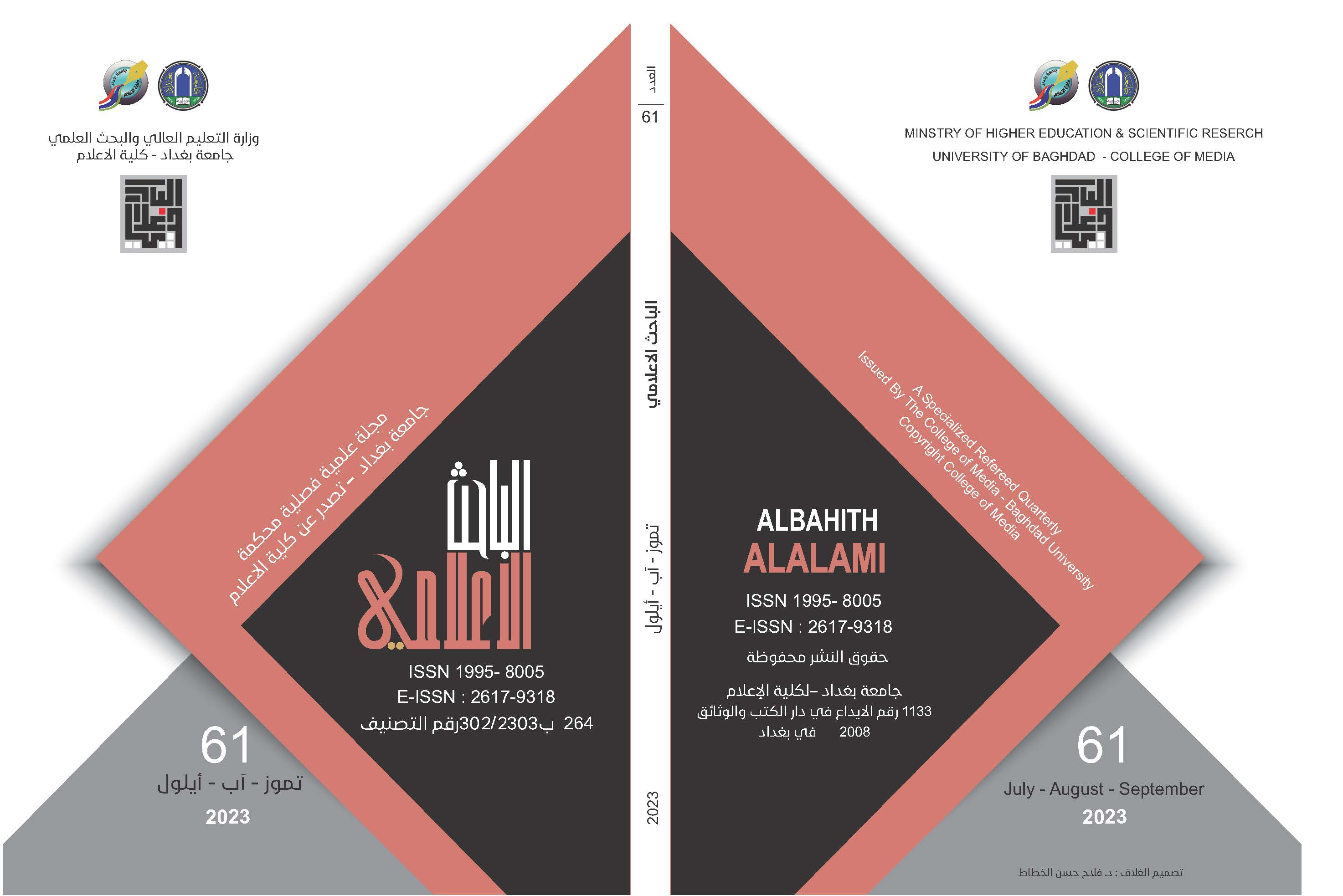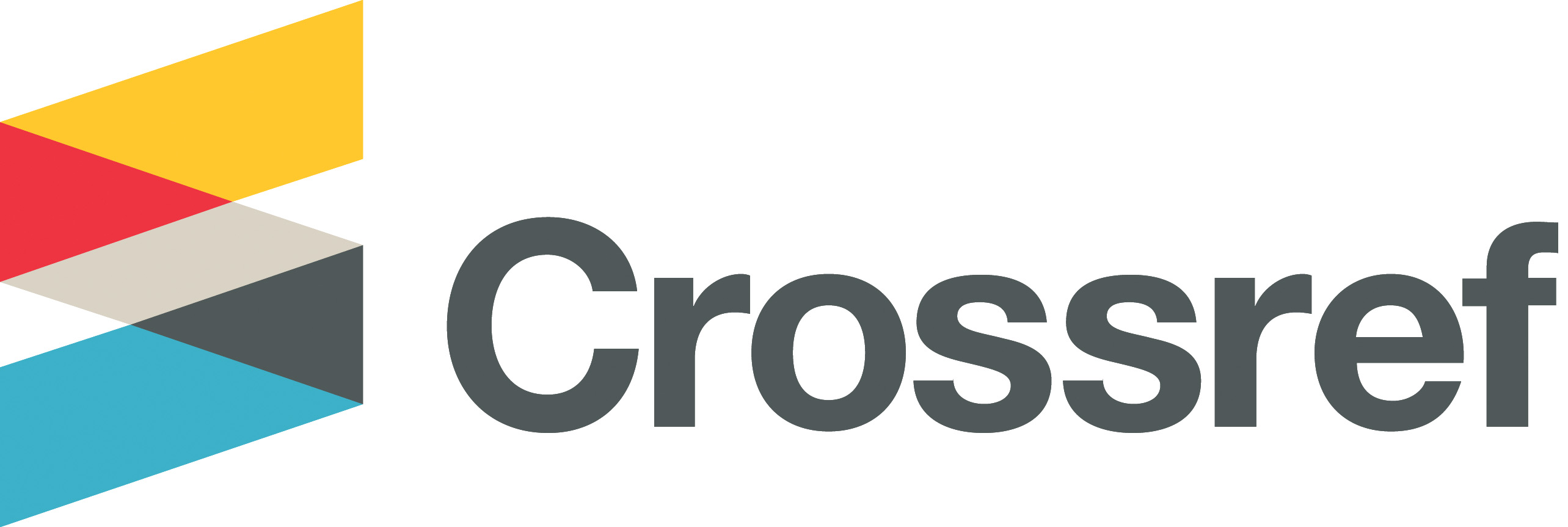The Iraqi Journalistic Treatment of COVID-19 pandemic
DOI:
https://doi.org/10.33282/abaa.v15i61.1030Keywords:
Journalism Treatment, Crises, COVID-19 PandemicAbstract
This research aims to investigate the approaches adopted by Iraqi newspapers in addressing the COVID-19 pandemic crisis. Employing a descriptive methodology and survey technique, the study conducts content analysis on articles published in three prominent newspapers: Al-Sabah, Al-Mada, and Tareeq Al-Shaab. A multi-stage sampling method was employed, encompassing 260 issues of the aforementioned newspapers. Data collection involved the use of a content analysis questionnaire, with the "How it was said?" method utilized to determine analysis categories.
The results showed that Al-Sabah newspaper adopted a positive approach in addressing COVID-19-related topics, while Al-Mada newspaper remained neutral, and Tareeq Al-Shaab newspaper had a negative approach. Additionally, the study underscores a preference for internal sources and actors as primary information providers within the newspapers' COVID-19 coverage.
Based on these findings, it can be concluded that Al-Sabah newspaper took a positive stance towards the COVID-19 crisis, while Al-Mada remained neutral, and Tareeq Al-Shaab was negative in their treatment of these topics. The results indicate that the renowned trusted newspapers attached great importance to internal sources in their pandemic coverage.
Downloads
References
Björck, A. (2016). Crisis typologies revisited: An interdisciplinary approach. Central European Business Review, 5(3), 25-37.
Abdel Azim, R. A. (2019). Patterns of bias in news processing. Cairo: Al Arabi Publishing and Distribution.
Aleakili, J. K. (2015). Health awareness through communication means: A study to measure the health awareness of Baghdad University students regarding AIDS. ALBAHITH ALALAMI, 7(27), 115-145. https://doi.org/10.33282/abaa.v7i27.209
Al-Fourki, M., & Radwan, A. (2020). The impact of the Coronavirus on contractual obligations. Retrieved from Journal of International Law and Business: https://www.droitetentreprise.com/18733/
Al-Hadidi, M. (2018). Media and confronting crises. Arab media and society, 2018(25), 1-5.
Al-Lami, G. Q., & Al-Issawi, K. A. (2015). Crisis management foundations and applications. Ammaan: Dar Al-Mawdhiyya for Publishing and Distribution.
Al-Nahi, H., Shiri, H., & Hassanein, H. (2012). Terminology project of the Arab Organization for Translation. Beirut: Arab Organization for Translation.
Al-Qaisi, J. A. (2022). Psychological pressures as a result of the spread of the coronavirus pandemic - Covid-19. Journal of Educational and Psychological Research, 19(75), 478-500. https://jperc.uobaghdad.edu.iq/index.php/jperc/article/view/1369
Al-Razi, Z.-D. A.-H. (1999). Mukhtar Al-Sahah (5 ed.). Beirut: Modern library.
Al-Saidi, N. M. (2020). The Egyptian public’s attitudes towards new media’s treatment of the emerging Corona virus pandemic. Journal of Media Research, Part 4(54), 2093-2169. https://doi.org/10.21608/jsb.2020.108274
Al-Senussi, T. M. (2016). Media Management of Terrorism Crises: The Case of Charlie Hebdo (Arabic). Arab media and society, 2016(22), 1-22. https://shorturl.at/iknv8
Al-Shammari, S. J., & Al-Sarraj, S. C. (2017). Media and specialized media. UAE: University Book House.
Amer, F. H. (2010). Media treatment of issues in the Arab world. Cairo: Al Arabi Publishing and Distribution.
ansa, a., & Tawfiq, D. (2020). Media treatment of environmental issues through new media: A descriptive and analytical study of the National Waste Agency’s Facebook page as an example. Journal of Social Sciences and Humanities, 12(2), 186-212. Retrieved from https://www.asjp.cerist.dz/en/downArticle/394/12/2/214318
Bin Nawiwa, O. (2016). Media treatment of health awareness issues in the Algerian print press - an analytical study of the content of the daily newspaper Al-Khabar (Unpublished Master Thesis). Bou Madhiaf University, Faculty of Humanities and Social Sciences, Department of Media and Communication Sciences.
Ismail, Z. I., & Khalifa, S. A. (2022). Maturity and adulthood in times of epidemics: the novel The Fever Epidemic of 1793 by Laurie Hallis Anderson as an example. Al-Ustaz Journal for Humanities and Social Sciences, 61(3), 531-544. https://doi.org/10.36473/ujhss.v61i3.1682
Jiyad, M. A. (2012). Coverage of health issues in the Iraqi press: An analytical study of Al-Sabah and Al-Mada newspapers for the period from 1-31/10/2007. ALBAHITH ALALAMI, 9(35), 135-158. https://doi.org/10.33282/abaa.v9i35.131
Mahmoud, A. O. (2020). The role of Egyptian electronic newspapers in educating the public about the societal risks of the Corona pandemic (field study). Journal of Media Research, part Four(55), 2446 - 2379. https://doi.org/10.21608/JSB.2020.124112
Muhammad, I. A. (2020). News frames of the Corona pandemic in the Arab press - an analytical study. Journal of Media Research, Part 4(55), 2133-2226. https://doi.org/10.21608/jsb.2020.124105
Najm, A. (1991). Media dictionary (2 ed.). Baghdad: Dar al-Hikma.
Obaid, M. A.-R. (2018). Islam and crisis management. Cairo: Arab Knowledge Bureau.
Omar, A. M. (2008). Dictionary of contemporary Arabic language. Cairo: World of Books for Publishing and Distribution.
Qalaji, M. R. (1996). Dictionary of the language of jurists. Beirut: Dar Al-Nafais for printing, publishing and distribution.
Salem,, S. A.-S. (2016). The role of social media in managing crisis and disaster communications. Egyptian Journal of Media Research, 2016(56), 313-386. https://journals.ekb.eg/article_90487.html
Shafiq, H. (2015). Media under threat. News coverage from the heart of danger. Violations and professional safety of media professionals. 6th of October, Egypt: Dar Fikr and Fan for printing, publishing and distribution.
Youssef, L. B. (2016). Media planning, theoretical and applied foundations. UAE: University Book House.
Downloads
Key Dates
Published
Issue
Section
License
Copyright (c) 2023 ALBAHITH ALALAMI

This work is licensed under a Creative Commons Attribution 4.0 International License.
Authors retain copyright and grant the journal right of first publication with the work simultaneously licensed under a Creative Commons Attribution License (CC BY 4.0) that allows sharing the work with recognition of authorship and initial publication in ABBA journal.


















